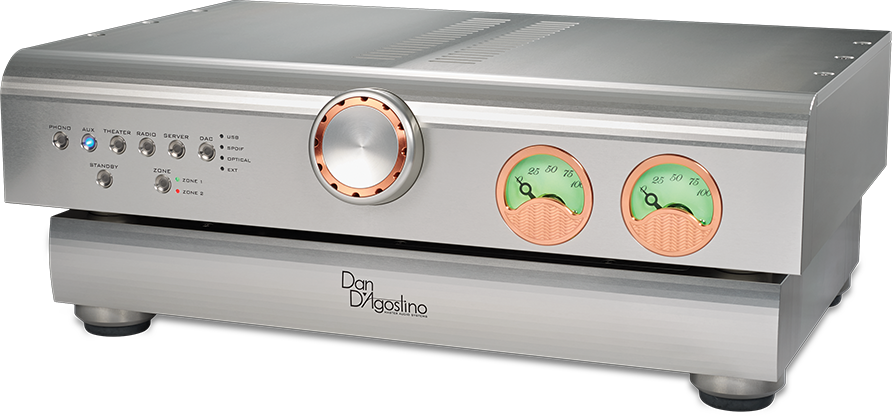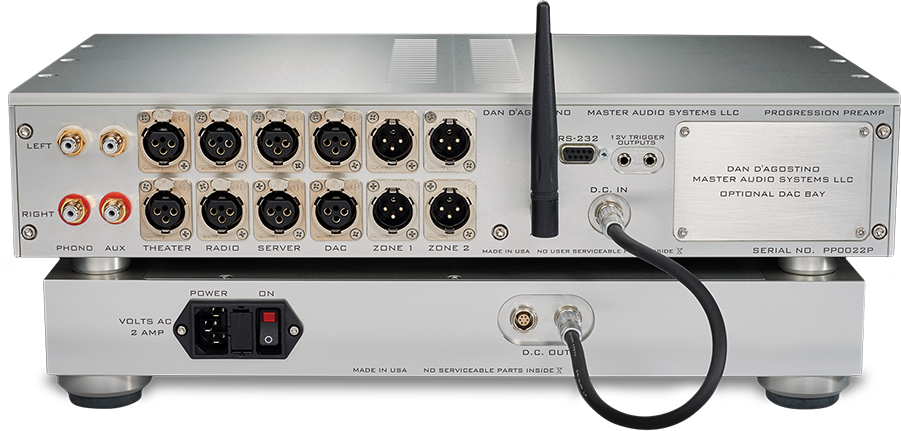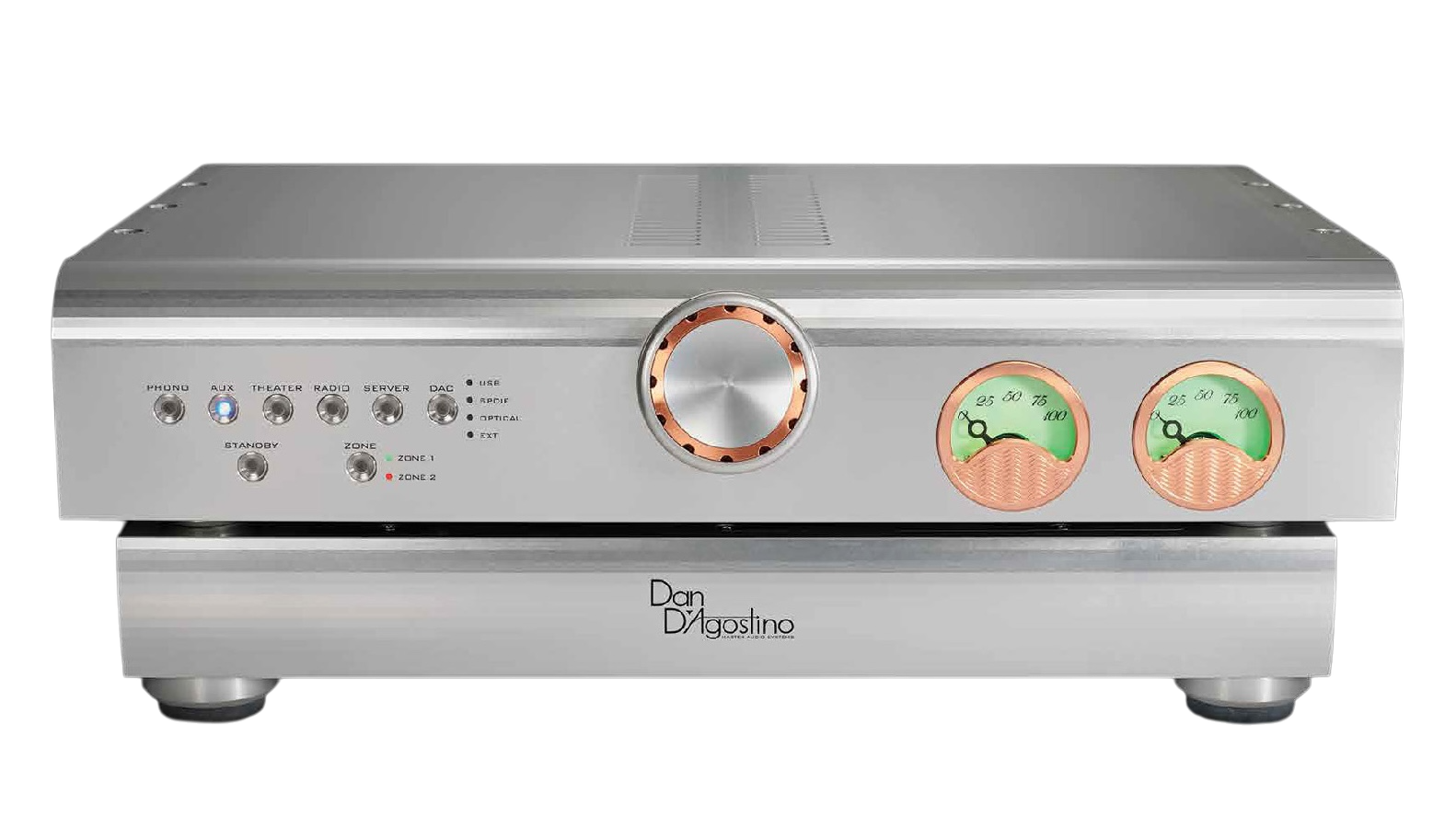- Home
- | Products
- | PROGRESSION
Progression Preamplifier
Versatility and performance, with a separate power supply and an optional Digital Streaming Module
Versatility, Performance, and Value
Designed to deliver the greatest value in genuine high-end audio, the Progression Preamplifier delivers versatility and performance. An optional, field-upgradeable Digital Streaming Module adds coaxial, Toslink, and USB inputs to the analog base model. A fully differential DAC handles PCM signals up to 24 bit/384 kHz and DSD signals up to 4xDSD (11.2 MHz). This digital module feeds a discrete, fully complementary and balanced analog signal path from input to output. Negative feedback is not used anywhere in the Progression Preamplifier, nor is it necessary. Open-loop distortion is less than 0.006% and the open-loop bandwidth extends to over 100 kHz.

Advanced Control
The volume control is realized with a stepped balanced resistor ladder, using high-linearity solid-state relays and discrete precision resistors. The bandwidth and transient response of the preamplifier circuitry are unaffected by volume setting. The Progression Preamplifier has two independent outputs that can be individually operated or used simultaneously for driving a second amplifier in a subwoofer-based system. Bluetooth extends the range of the remote control by a factor of five and eliminates line-of-sight limitations that are inherent in IR remote controls.

Separate for the Greatest Isolation
Housed in a separate chassis, the power supply of the Progression Preamplifier makes use of extensive electrical and magnetic shielding to keep radiated interference away from critical preamplifier circuits. Internal circuitry filters RF noise on the AC power line and compensates for asymmetric power waveforms and DC on the mains. A second DC output is included to power future Progression source components. Two analog meters, inspired by Swiss watch faces, function as signal meters during music playback. When volume is adjusted, the meter needles change to volume setting indicators. After adjustments are made, the meters revert back to signal meter operation. The meters also function as balance indicators when adjusting balance.
Specifications
|
Frequency Response |
0.1 Hz to 1 MHz, -3dB / 20 Hz to 80 kHz, +/-0.5dB |
|
Signal-to-Noise Ratio |
>88 dB, A-weighted / >95 dB, unweighted |
|
Gain |
+9.8 or +15.4 dB, switchable |
|
Distortion |
< 0.018%, 20 Hz to 20 kHz |
|
Analog Inputs |
4 pair balanced XLR stereo; 2 pair unbalanced RCA stereo |
|
Digital Inputs (with optional Digital Streaming Module) |
1 each SPDIF coaxial; Optical Toslink; USB-B; RJ45 Ethernet; Wi-Fi |
|
Outputs |
2 pair balanced XLR stereo |
|
Dimensions (WHD) |
18.0 x 7.3 x 12.0 in / 45.0 x 19.5 x 30.0 cm |
|
Weight |
40 lb / 18 kg |
|
Finish |
Silver or Black |



